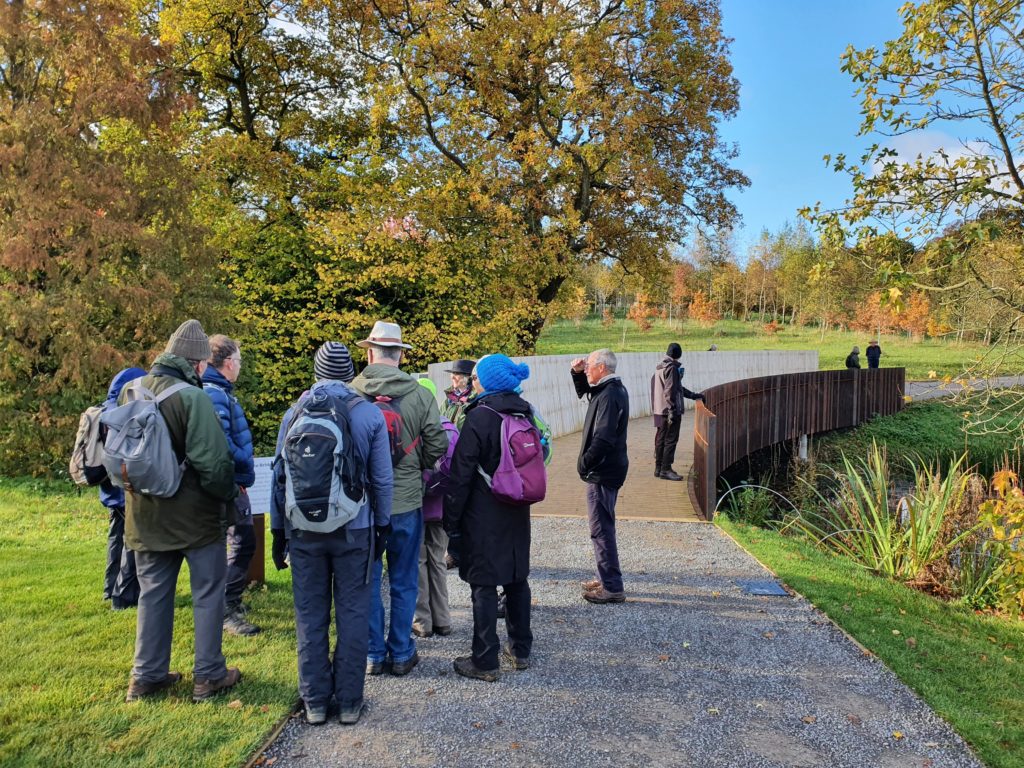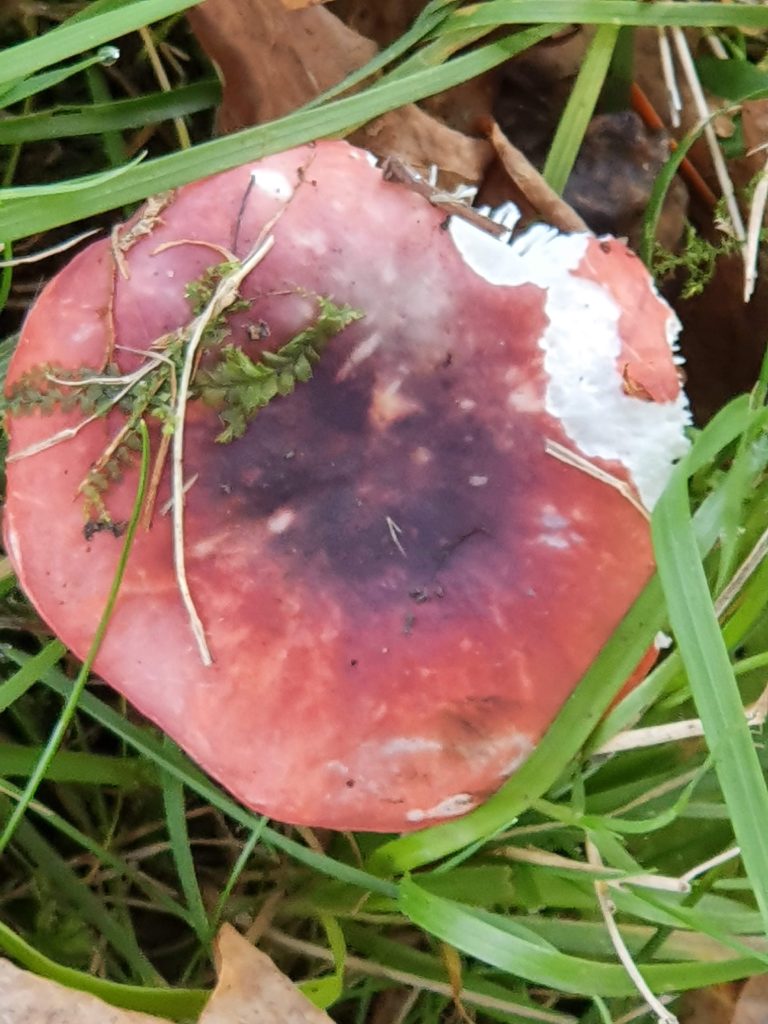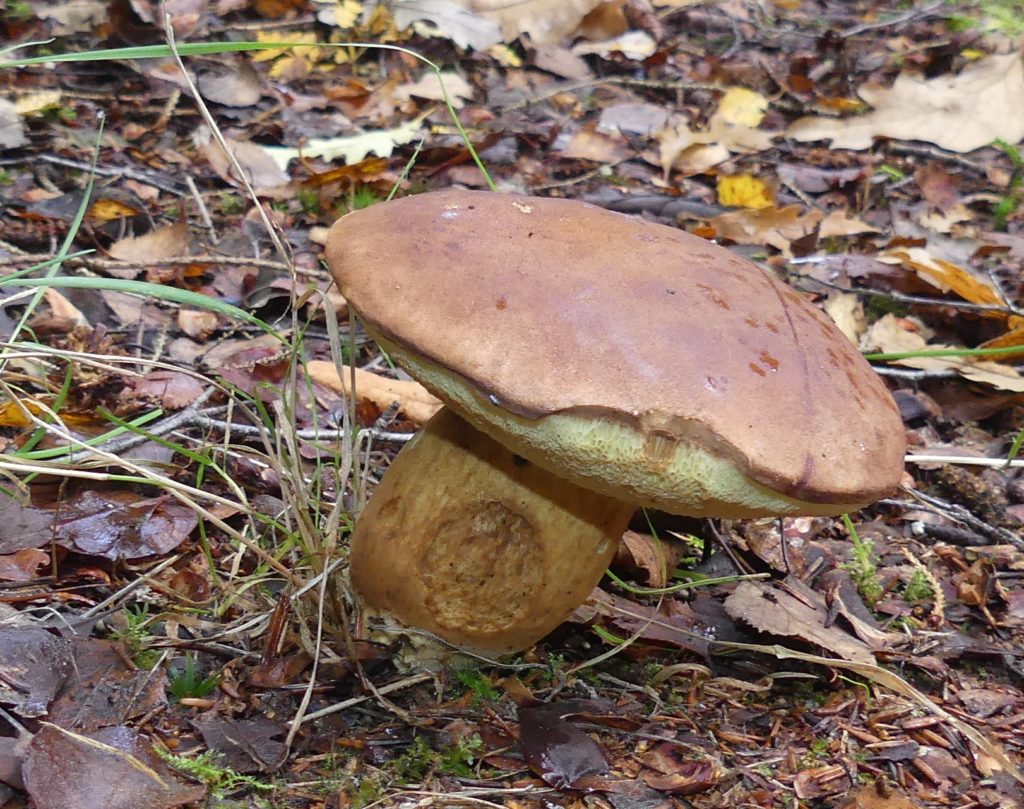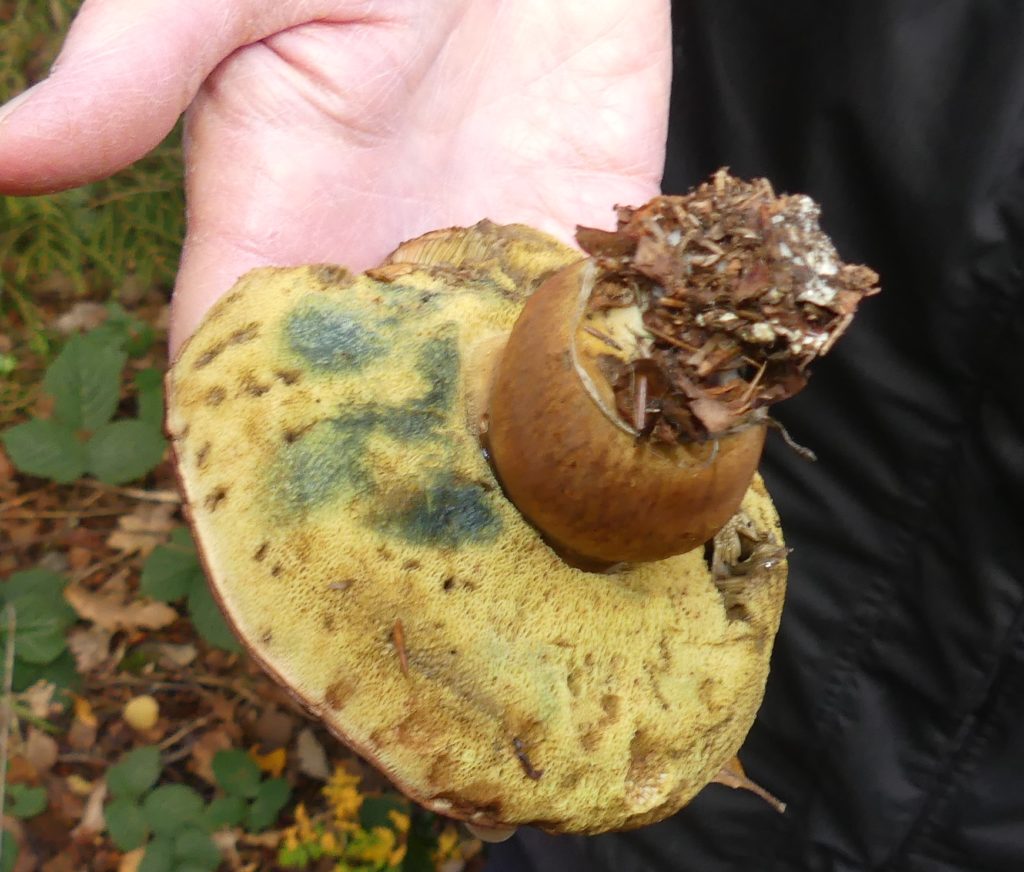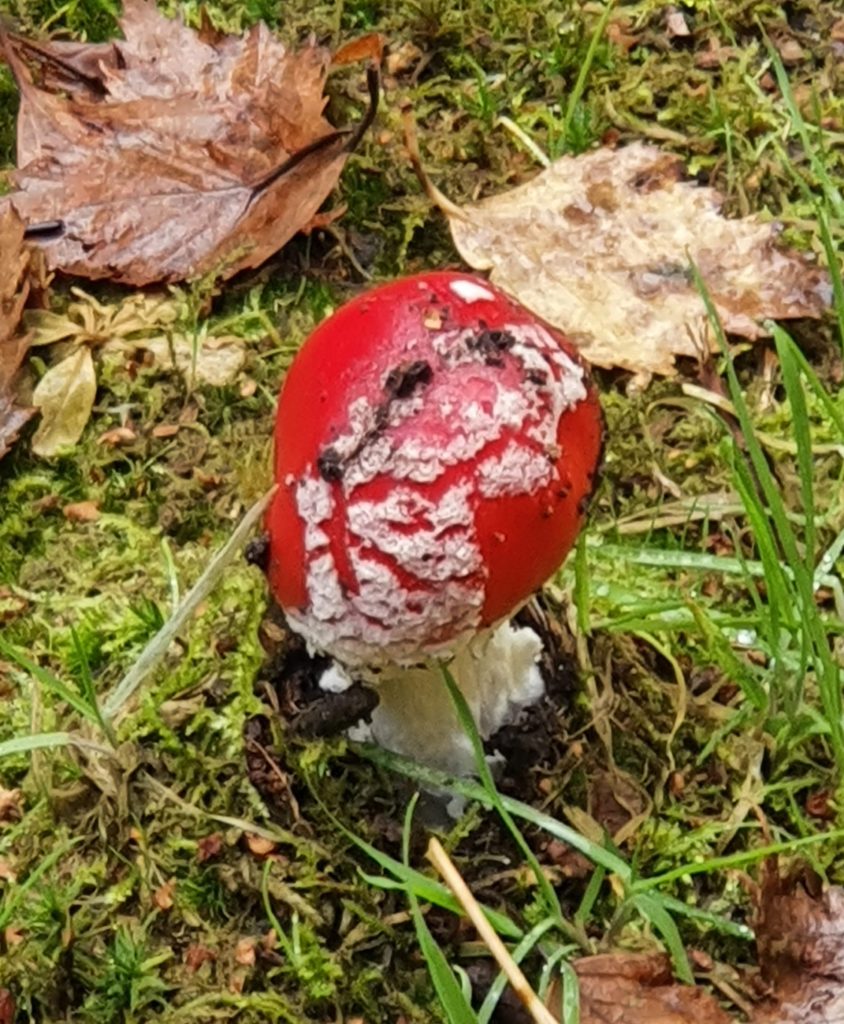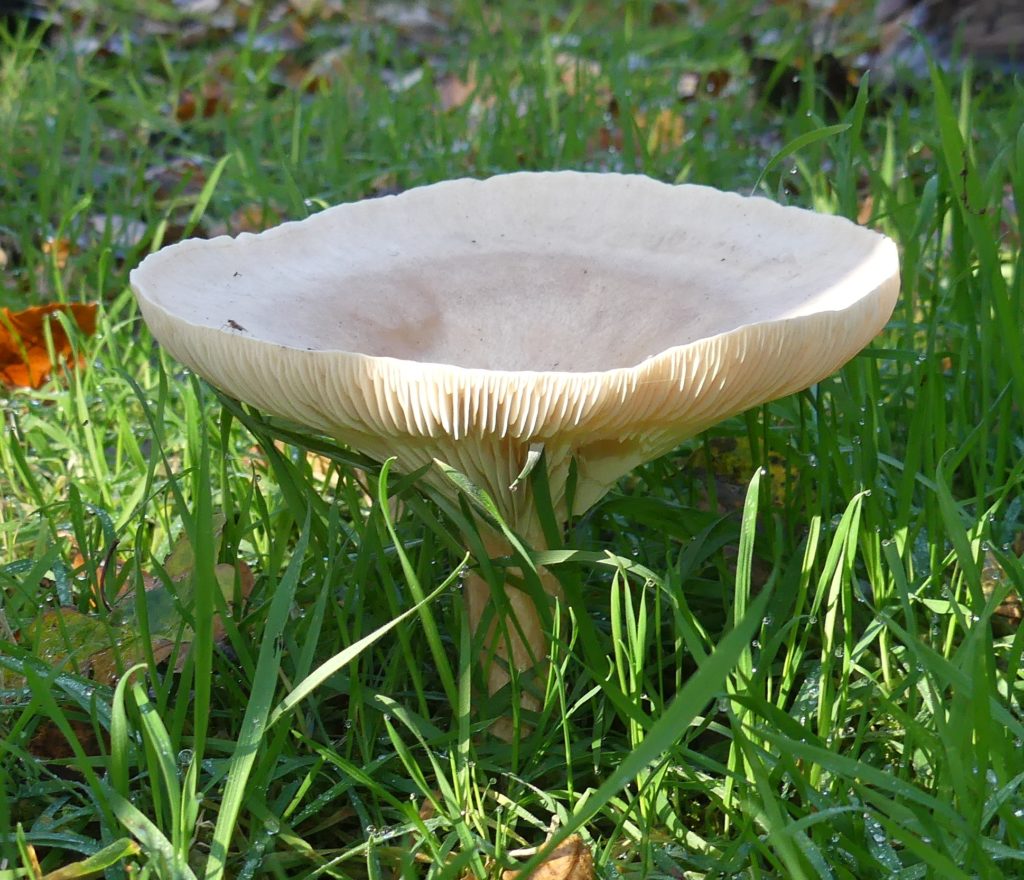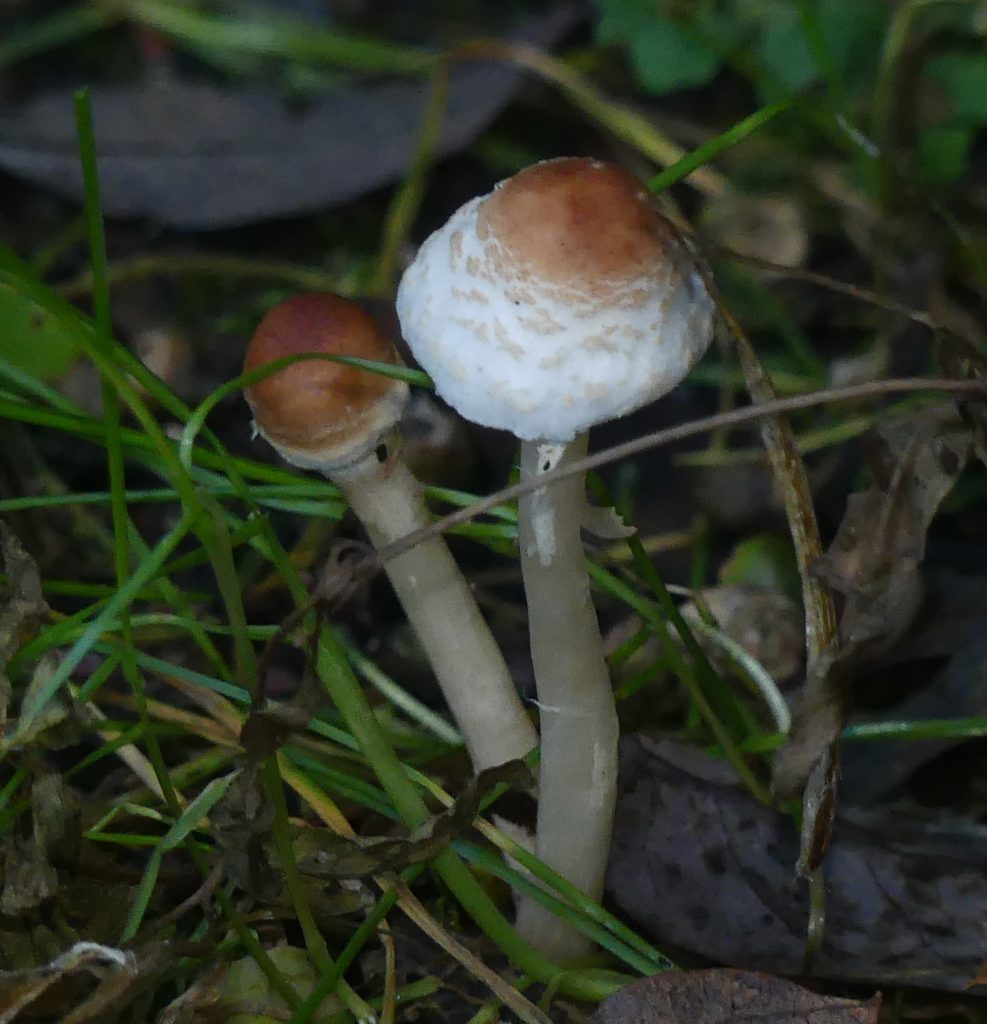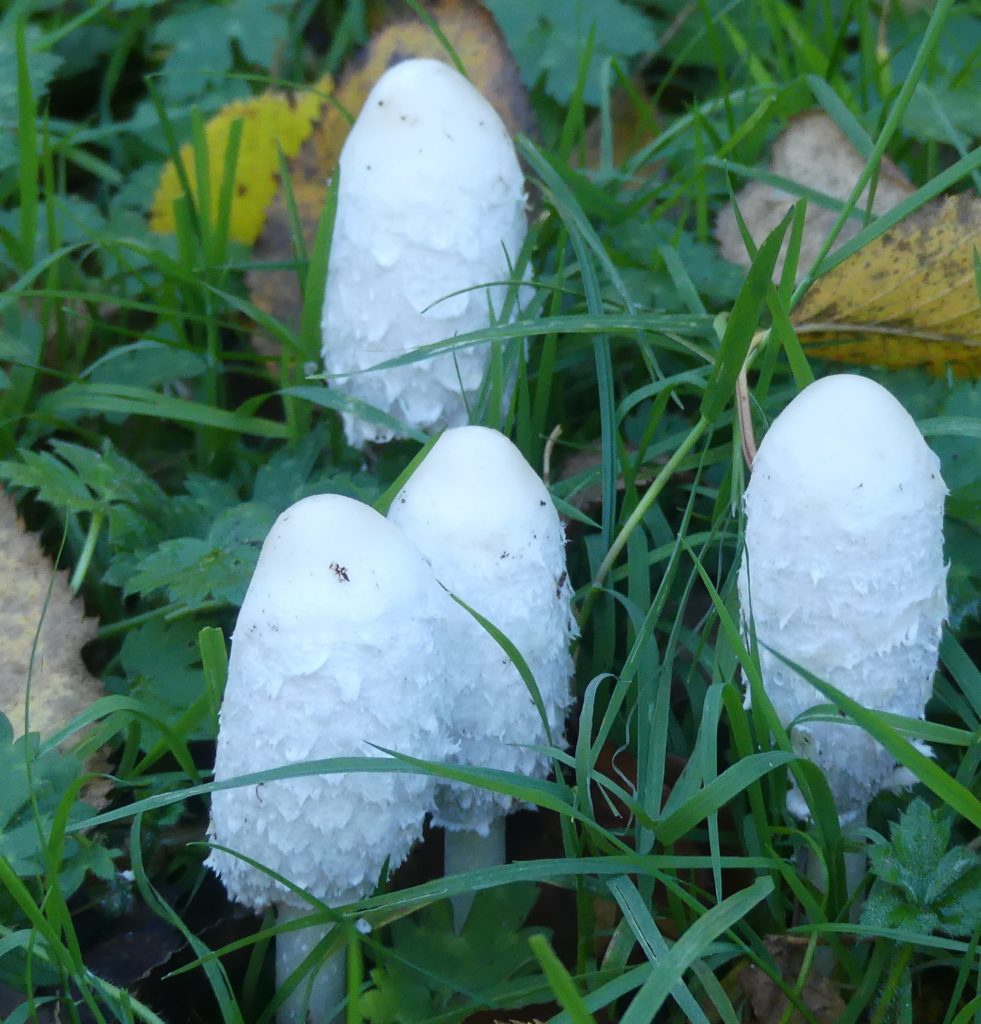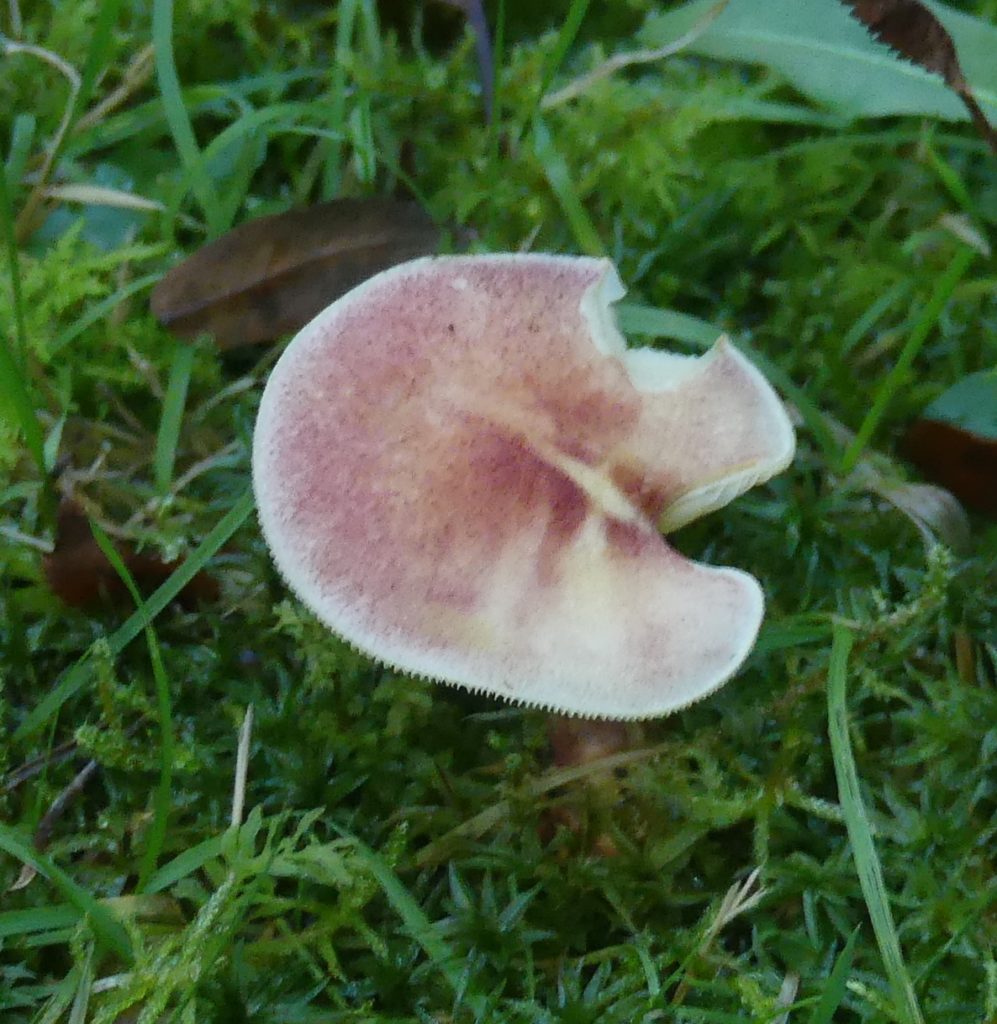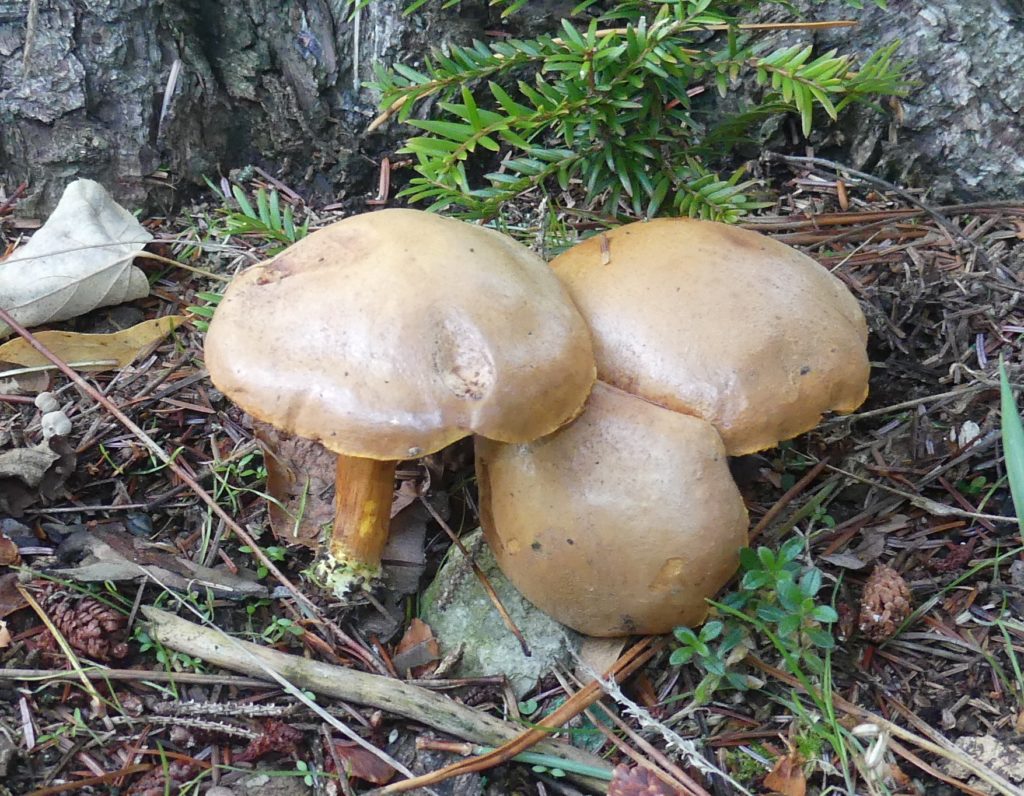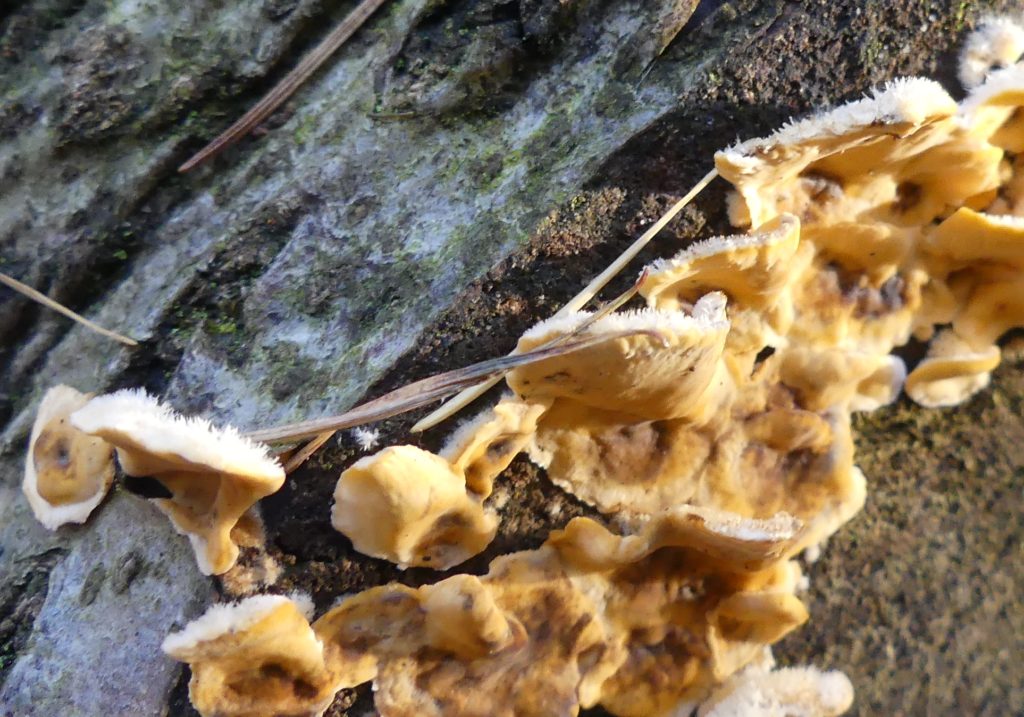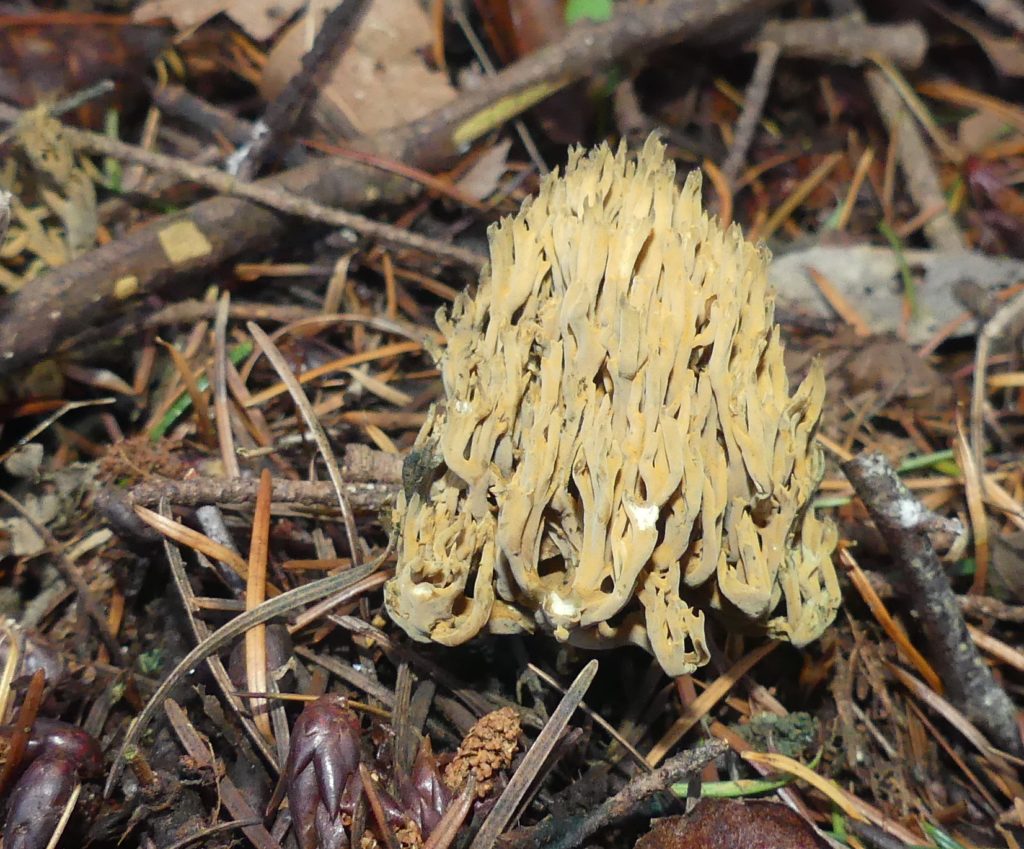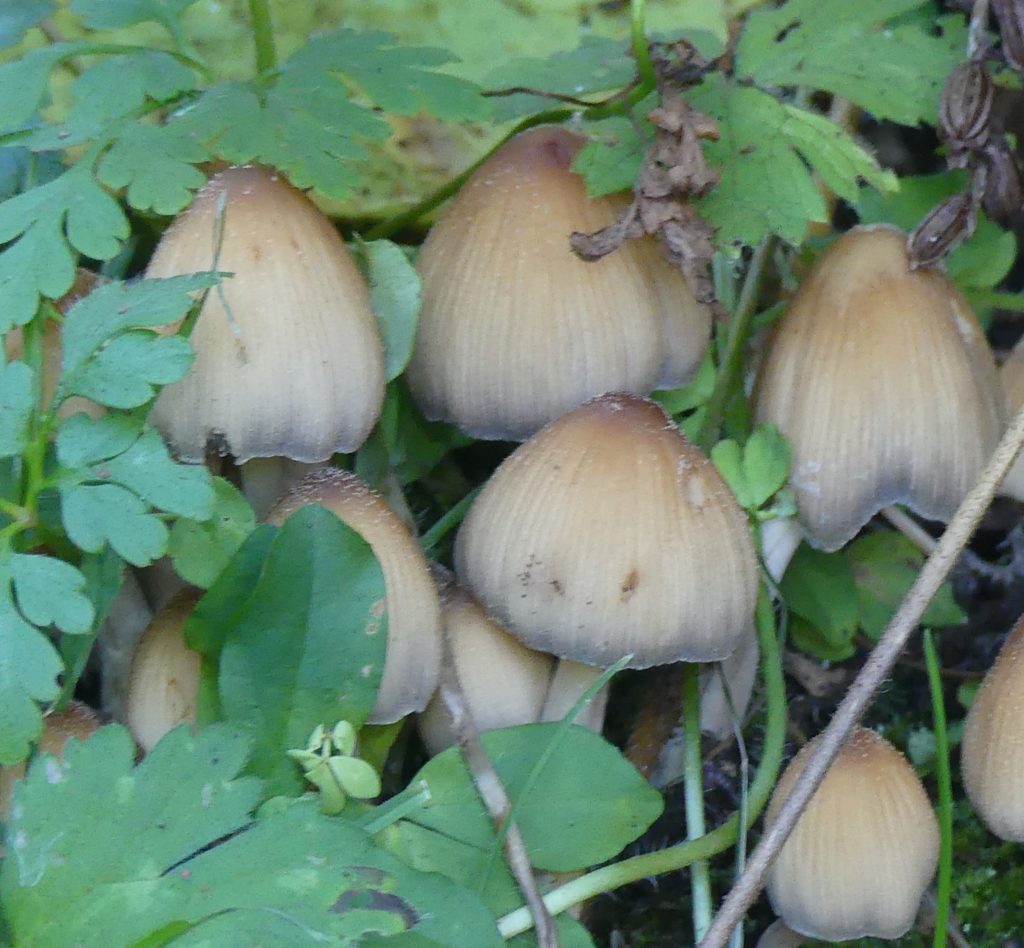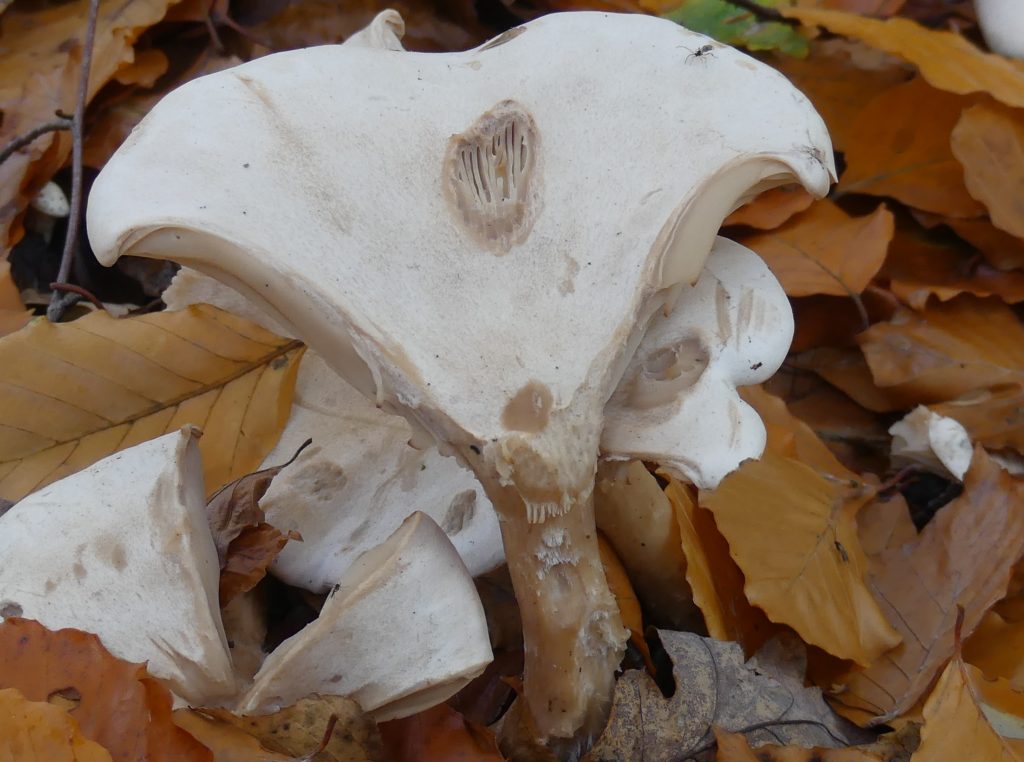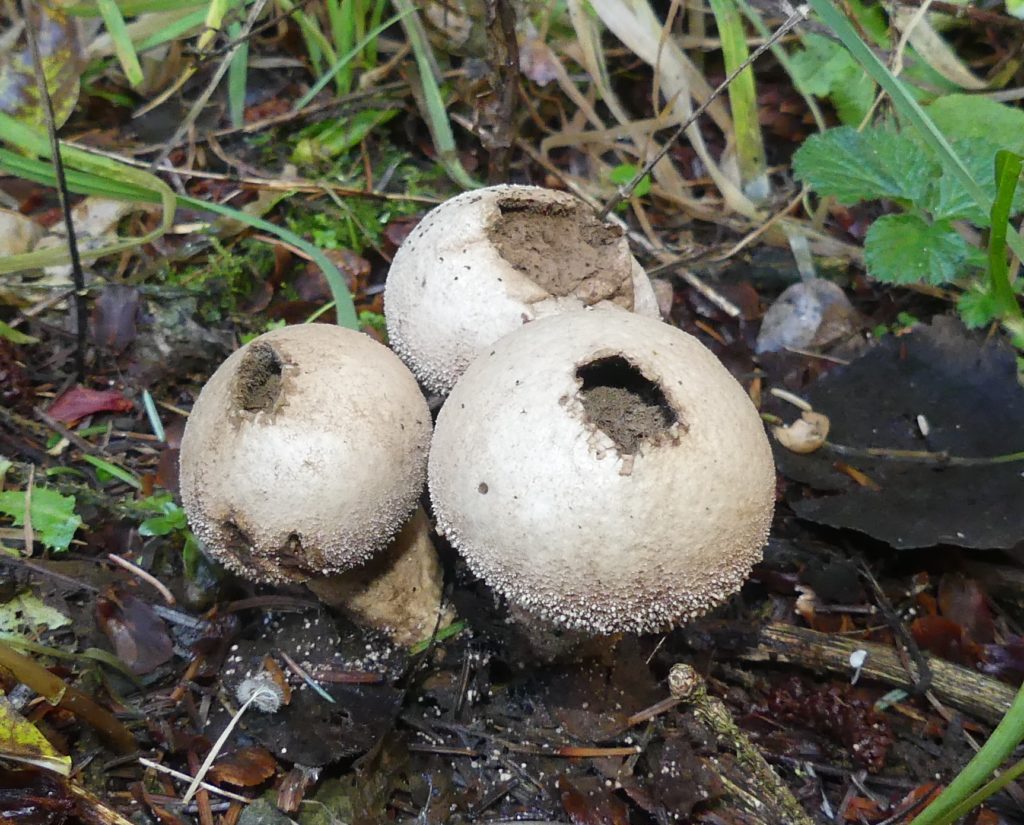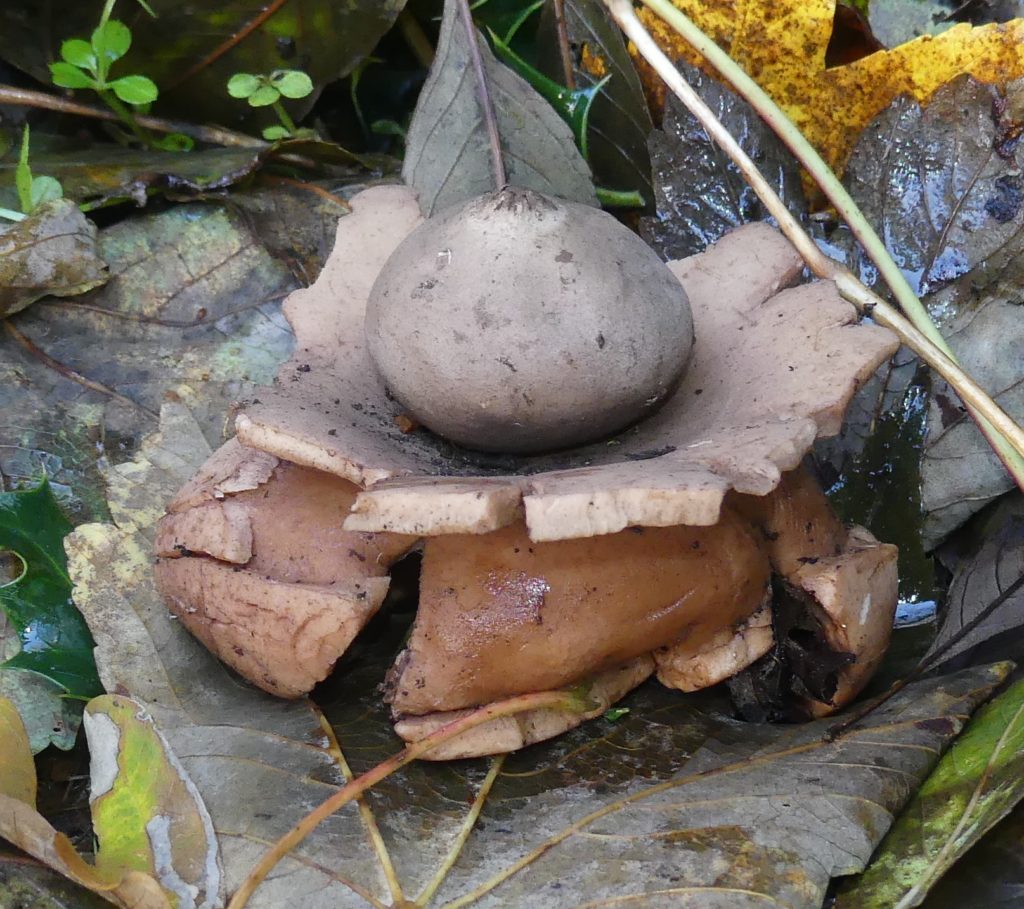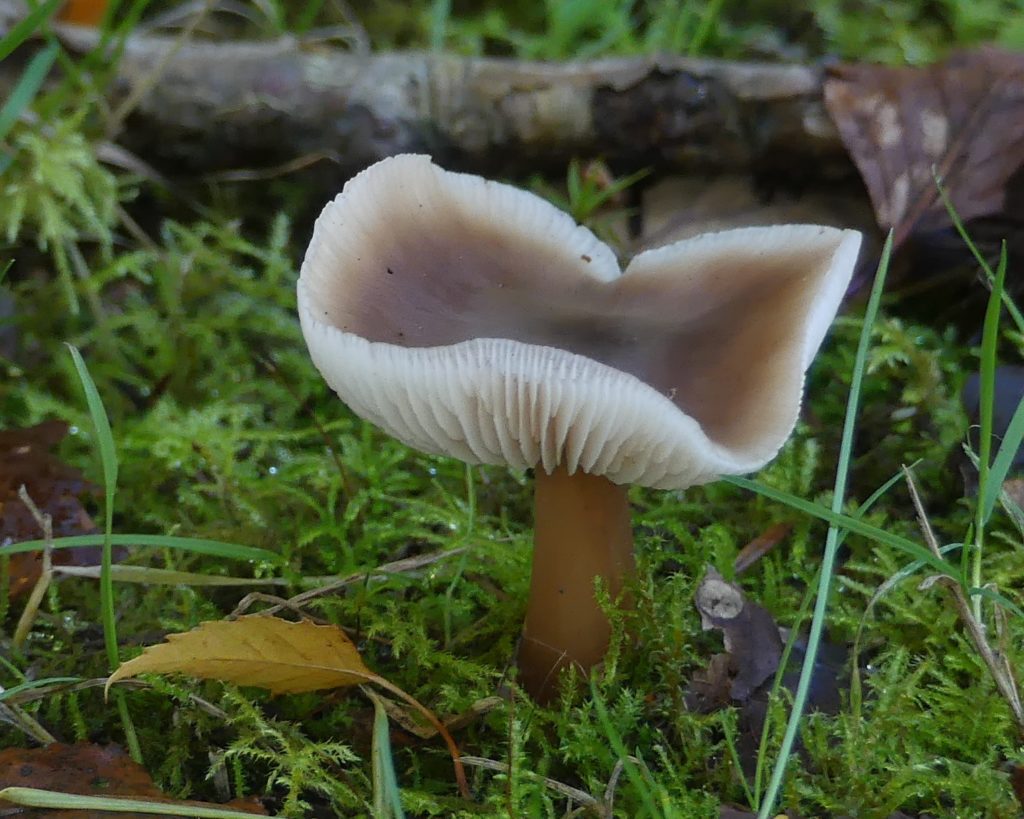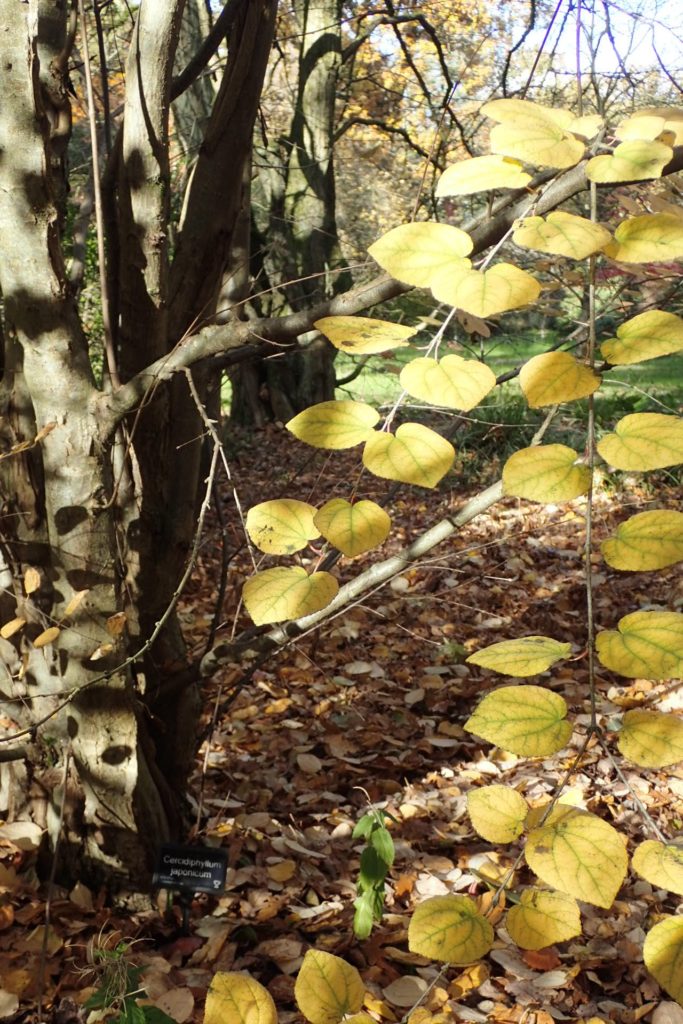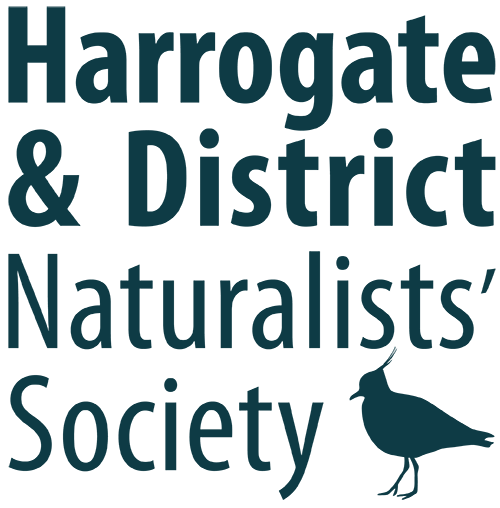Fungus forays are usually very popular events and so it was no surprise that 15 members and friends assembled outside the entrance to Harlow Carr Gardens, ready to spend time learning about mycology. The event was led by Dr Kevin Walker who took the trouble to explain that he is a botanist who is now increasingly interested in fungi.
Before entering the gardens we were subjected to having the soles of our feet sprayed for biosecurity purposes, which nobody questioned. I suspected it was a devious tactic to weed out a lack of balance amongst the old and infirm. (Note to self – must practise standing on one leg more often.) Anyway, we all seemed to pass the biosecurity/balance test and so we were ready to go.
We made a start in the clearings amongst beech woods, which are apparently good for finding fungi. The first species we found was Purple Brittlegill, in the Russula genus. Some species of Brittlegills can be brightly coloured, and are identified by the white gills breaking easily – hence the name.
We then moved on to the Milkcaps – genus Lactarius. Here, a helpful feature is that all the species exude droplets of ‘milk’ from their gills when they are damaged.
Then inevitably we came across Honey Fungus (Armillaria mellea) the dread of all gardeners and arboriculturalists. There are several types of this fungus which spreads by long, black cords called rhizomorphs, resembling bootlaces. These can travel long distances to infect other trees. The fungus causes a white rot and eventually kills the tree.
Further on, we found a tree stump hosting a variety of fungi species and this provided us with much discussion and identification. Kevin pointed out a ‘cool’ fungus called Purple Jellydisc (Ascocoryne sarcoides) growing there. This is a reddish purple, gelatinous fungus, with an inverted cone-shape, which apparently enjoys living on dead wood especially beech.
Nearby we came across two species of Bolete. This family has mushrooms with distinctive pores and tubes rather than gills and can look spongy. The first one we found was Bay Bolete Boletus badius and Kevin demonstrated how it turned blue when bruised, a common feature of these species. We also can turn blue ourselves when bruised, but I refrained from saying anything in case a scientific explanation was forthcoming which I may not have understood. The second, Peppery Bolete Chalciporus piperatus is a close associate of Fly Agaric Amanitamuscaria and was found growing at the base of a conifer with Fly Agaric close by.
After finding around 30 species of fungi, our final species in the morning was Collared Earthstar, Geastrum triplex. There were several of these under a holly hedge along the edge of the gardens, where it has been known for some time. These remarkable fungi are related to puffballs with the spores contained within the body of the fungus and starlike feet that in some species raise them above the ground. Collared Earthstar is by far the most common species but is still rare in the HDNS recording area.
After our picnic lunch we found several more fungi species including some with intriguing names such as White Saddle, Stinking Dapperling, Shaggy Inkcaps, Cavalier, Plums and Custard, Greening Coral and Sulphur Tuft; also Deceiver and Wood Blewitt. The Deceiver is in the genus Laccaria and as its name suggests its cap colours are very variable and may cause difficulty in identification. Blewitts are in the genus Lepista and many are edible. The distinctive character is the pink spores, noticeable as a pink flush on the gills as they mature.
During the course of the day Kevin gave us some helpful hints about how to identify fungi, including spore prints, the presence of veil remnants and the use of smell and taste where great care is required. As we walked through the Gardens we also noticed some interesting features. Firstly, the Thaliana Bridge which has been in place for only a few months. It is named after Thale Cress Arabidopsis thaliana which is the first plant to have its genomes fully sequenced. The bridge shows a linear representation of the genes in one of the chromosomes. Then as we walked through the trees, we could smell burnt sugar. This was emitted by the Caramel Tree, Cercidiphyllum japonicum, known as the Katsura. It is known for the caramel smell it emits during leaf fall and is native to China and Japan.
It was a truly fascinating day. So rewarding, and comprising almost 40 named species and many more that could not be identified to species!
Thanks to the Royal Horticultural Society for allowing us to visit; to Muff for organising the event; to Kerry Morrison for taking over at such short notice; to all the attendees; to all the photographers; and finally to Kevin Walker for his learned discourses.
Sonia Starbuck
References: Mushrooms, Roger Phillips pub. 2006 Macmillan
